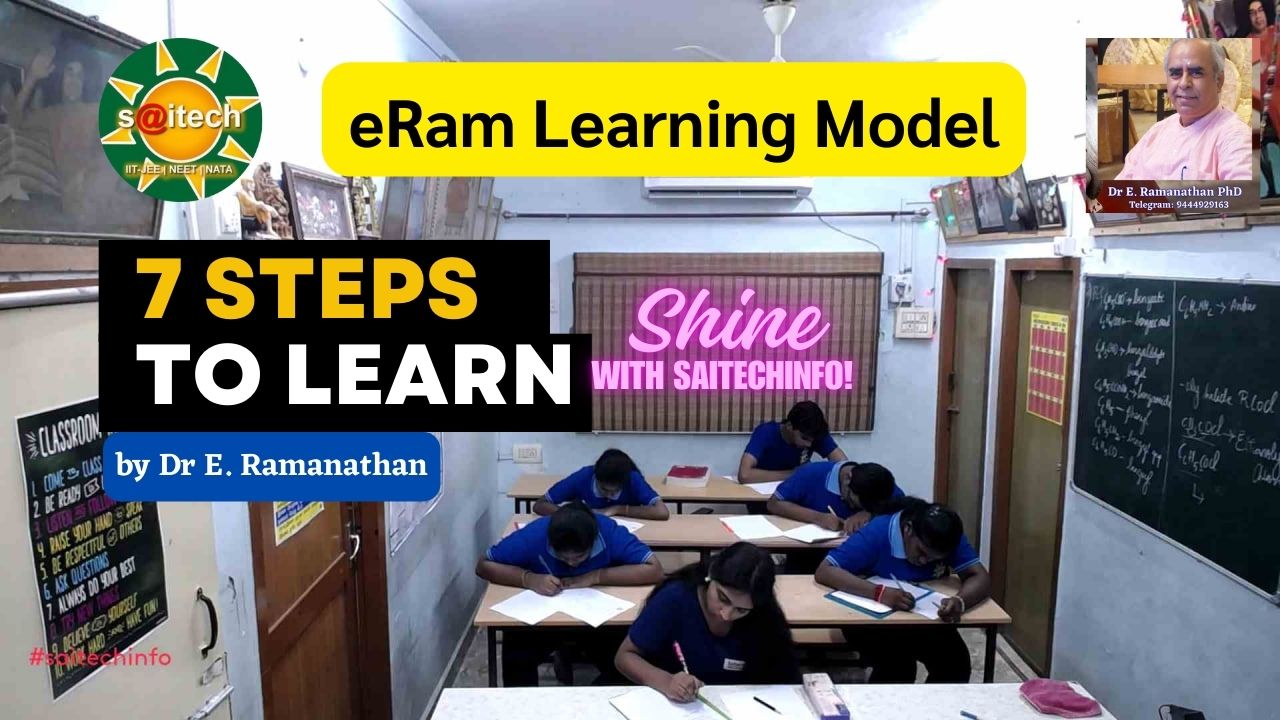by Dr E. Ramanathan
The Chola kings were known for their patronage of education, and this is well-documented in inscriptions found in temples like Brahmadesam, Esalam, and Ennayiram near Villupuram in Tamil Nadu. These inscriptions provide insights into the educational institutions and the Cholas’ commitment to fostering knowledge.
1. Brahmadesam Temple and Education:
- The Brahmadesam Brahmapureeswarar Temple inscriptions reveal that the temple was not only a place of worship but also a hub for education.
- A Vedic school functioned within the temple premises where students resided and were provided with resources to learn scriptures and sacred texts.
- The temple also housed a mutt (monastic institution) called “Rajanarayanam,” where food was prepared in the temple kitchen (madapalli) for students, teachers, and saints. This indicates that the temple functioned as a self-sufficient educational institution.
- Donations in the form of land, paddy, and coins, as detailed in the inscriptions, supported the educational activities. This demonstrates the integration of education into the religious and administrative framework of the Chola dynasty.
2. Esalam Inscription:
- Esalam, another site near Villupuram, contains inscriptions from the reign of Rajendra Chola I, highlighting his patronage of education.
- These inscriptions mention the establishment of educational institutions (ghatikas) and the allocation of revenue from nearby villages to sustain them.
- Teachers and students were provided with stipends, food, and accommodation. This reflects the Chola kings’ proactive approach to making education accessible and institutionalized.
3. Ennayiram Inscription:
- The Ennayiram inscriptions are among the most detailed records of the Chola dynasty’s commitment to education. These inscriptions, dating to the reign of Rajendra Chola I, describe a well-organized residential school (salai) functioning under royal patronage.
- The school offered instruction in subjects like the Vedas, grammar, logic, and literature.
- The Cholas provided substantial endowments, including land and resources, to support the school, teachers, and students.
- Specific roles and responsibilities were assigned to maintain the school, such as ensuring food and clothing for students and teachers. The administration of these institutions was meticulous, with detailed records of donations and expenditures.
Key Features of Chola Support for Education:
- Integration with Temples: Education was often linked with temple activities, making temples centers of learning and cultural transmission.
- Endowments and Donations: The Cholas ensured that educational institutions were financially independent by allocating land, taxes, and resources for their sustenance.
- Curriculum and Inclusivity: The curriculum was diverse, covering sacred texts, secular subjects, and even vocational training in some cases. Education was not limited to Brahmins but extended to others, particularly through the influence of donations from the local community.
- Residential Schools: The Chola kings encouraged residential schools where students could stay and focus on their studies without financial burdens.
The Chola dynasty played a pivotal role in fostering education through a well-organized system of temple-centered learning institutions. The inscriptions at Brahmadesam, Esalam, and Ennayiram illustrate their emphasis on creating self-sustaining educational hubs. By integrating education into religious institutions and providing generous endowments, the Chola kings ensured the transmission of knowledge and cultural values for generations. These initiatives showcase the Cholas as visionaries who understood the importance of education in building a prosperous society.
The Tamil inscriptions found in the Esalam temple near Villupuram provide valuable historical insights into the Chola dynasty, their governance, and their support for religion and education. The temple, known as the Narasimha Perumal Temple, houses inscriptions from the reign of Chola kings like Raja Raja Chola I and Rajendra Chola I. Here are the significant details of the inscriptions:
1. Temple Contributions and Patronage:
- The Esalam inscriptions record that the temple was under the patronage of the Chola kings, specifically during the reign of Raja Raja Chola I and Rajendra Chola I.
- The inscriptions highlight land grants made to the temple by local chieftains, communities, and the royal family.
- The land donations were given specifically for performing daily poojas, maintaining the temple, and feeding the priests and devotees.
2. Educational Institutions (Ghatikas):
- A key inscription from the reign of Rajendra Chola I (1014–1044 CE) mentions the establishment of a ghatika (educational institution) in Esalam.
- The ghatika served as a center for higher learning where students were taught subjects like Vedas, grammar, logic, and scriptures.
- The funding for the ghatika came from land grants and revenue from nearby villages. These resources were used to support teachers (gurus) and students (shishyas) through stipends and provisions.
3. Taxation and Administration:
- The inscriptions detail the types of taxes collected from the nearby villages, such as:
- Irai (Royal Tax): A portion of the revenue collected by the kingdom.
- Kadamai (Service Tax): Taxes collected for maintaining temples and public services.
- Vari (Special Levies): Collected for temple festivals and religious activities.
- These taxes were used for the upkeep of the temple and its associated activities, including education.
4. Social and Religious Contributions:
- The inscriptions mention that the temple was an important community hub, not just a religious center.
- It provided a platform for Vedic chanting, scriptural studies, and cultural activities.
- The temple also played a role in fostering agricultural development by using land donations for cultivating crops, the proceeds of which were used for temple maintenance and educational funding.
5. Description of the Inscriptions:
- The inscriptions are primarily in Tamil script and detail:
- Names of donors, including kings, local chieftains, and merchants.
- The quantity of land and other resources donated.
- Specific instructions on how the donated resources were to be used.
6. Artistic and Architectural Context:
- Along with the inscriptions, the Esalam temple itself is an example of early Chola architecture.
- The sculptures and carvings reflect the craftsmanship of the period and depict deities like Narasimha, along with scenes from epics and inscriptions that immortalize the contributions of donors.
Importance of the Esalam Inscriptions:
- The Esalam inscriptions highlight the Chola kings’ commitment to integrating education, religion, and administration.
- They emphasize the role of temples not only as places of worship but also as centers of learning and social welfare.
- The records provide evidence of the organized tax system and land management policies of the Cholas.
Brahmadesam Temples
To be continued….
Esalam Sri Ramanatheswarar Temple
The Sri Ramanatheswarar Temple is located in Esalam near Tindivanam in Villupuram District, Tamil Nadu. It is a significant historical and spiritual site with roots tracing back to the Chola dynasty. This initiative was part of a broader effort to promote Shaivism and establish temples dedicated to Lord Shiva across the Chola Empire.

Architecturally, the temple is notable for its circular vimana (tower) and a mandapa (hall) supported by 16 stone pillars. The outer walls feature intricately carved statues of deities facing the cardinal directions: Indra (east), Vishnu (west), Brahma (north), and Dakshinamurthy (south). The temple’s design reflects the architectural prowess of the Chola period.
In 1987, during renovation efforts, villagers discovered a cache of 23 bronze idols, temple utensils, and a copper plate charter within the temple premises. These artifacts, believed to have been concealed during invasions to protect them from plunder, offer valuable insights into the temple’s history and the era’s cultural practices.
The temple is dedicated to Lord Ramanatheswarar (a form of Lord Shiva) and his consort Sreedripurasundari. Local legends suggest that performing specific rituals here, such as abhishekam (ritual bathing) with cow’s milk and butter, can bestow devotees with benefits equivalent to performing significant Vedic sacrifices. Additionally, worshipping here during Pradosham is believed to alleviate various life obstacles.
Today, the Sri Ramanatheswarar Temple stands as a testament to the Chola dynasty’s devotion and architectural excellence, attracting researchers, historians, and devotees alike.
Ennayiram Narasimha Perumal Temple
The Ennayiram Narasimha Perumal Temple in Villupuram district is a remarkable example of early Chola architecture, showcasing their intricate craftsmanship and advanced engineering.
1. Vimanam (Sanctum Tower):
- Structure:
- The vimanam of the temple is built in the Dravidian architectural style, typical of the Chola dynasty.
- It is a two-tiered pyramidal structure, tapering as it rises, symbolizing the ascent to the divine.
- Base and Pillars:
- The base of the vimanam is decorated with intricate sculptural panels, depicting scenes from Vaishnavite mythology, particularly related to Lord Narasimha.
- The pillars around the sanctum are sturdy and carved with floral motifs, deities, and celestial beings.
- Shikara (Crown):
- The top of the vimanam is adorned with a kalasha (sacred pot), which signifies auspiciousness and serves as the crowning element.
- The shikara is a fine example of symmetry and balance, reflecting the Cholas’ expertise in temple construction.
- Carvings and Iconography:
- The walls of the vimanam feature miniature sculptures of Narasimha, Vishnu, Lakshmi, and other celestial beings, along with decorative arches and niches.
- The iconography is deeply symbolic, combining artistic excellence with religious themes.
2. Gopuram (Entrance Tower):
- Design:
- The gopuram is relatively modest compared to later Chola temples like Thanjavur, reflecting the early phase of Chola architectural evolution.
- It consists of a single-tier structure with simple but elegant ornamentation.
- Sculptural Highlights:
- The outer walls of the gopuram are adorned with bas-relief carvings of gods, goddesses, and mythological scenes.
- Figures of dwarapalakas (guardian deities) flank the entrance, emphasizing the temple’s spiritual significance.
- Orientation:
- The gopuram faces east, allowing the first rays of the sun to illuminate the temple’s sanctum, a hallmark of Chola temple design.
- Material:
- Constructed using granite and other durable stones, the gopuram stands as a testament to the Cholas’ skill in working with hard materials.
3. Unique Architectural Features:
- Inscriptions: The walls of the vimanam and gopuram are inscribed with Tamil texts detailing the temple’s history, contributions, and rituals.
- Proportional Design: The temple adheres to the Shilpa Shastra principles, ensuring a harmonious proportion between the gopuram, vimanam, and prakaram.
- Ventilation: The vimanam incorporates small openings and niches to allow natural light and ventilation into the sanctum, showcasing functional design.
4. Architectural Significance in Chola Heritage:
- The Esalam temple’s vimanam and gopuram highlight the transition phase of Chola architecture, blending simplicity with evolving grandeur.
- The temple serves as a precursor to later architectural marvels like the Brihadeeswarar Temple in Thanjavur, reflecting the Cholas’ growing ambition in temple construction.
The architectural features of these temples demonstrate not only the Cholas’ devotion to their gods but also their deep understanding of aesthetics, engineering, and cultural symbolism. Despite its relatively modest scale, the temple remains a significant landmark in Tamil Nadu’s rich architectural heritage.




